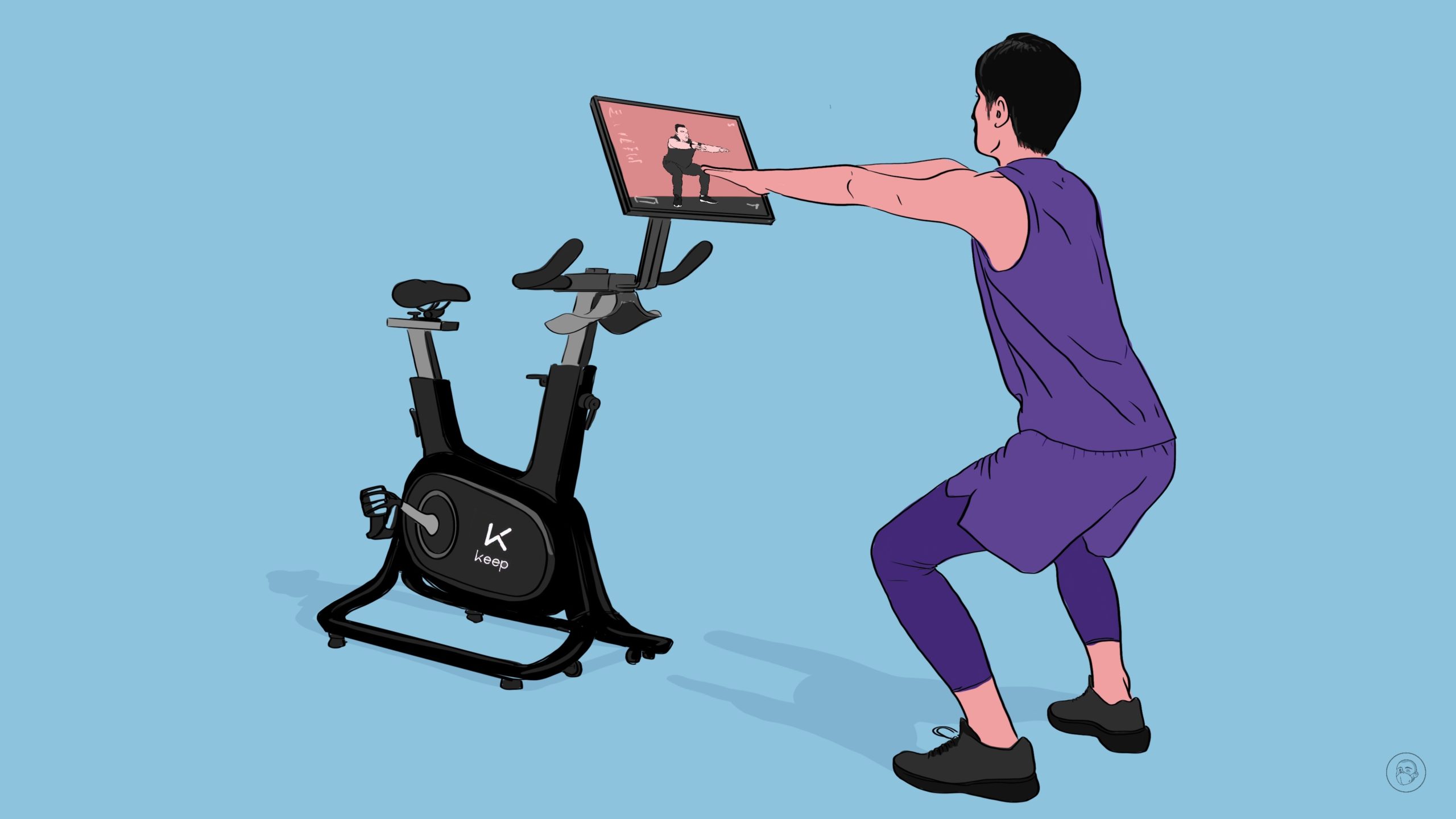China’s Peloton just can’t make a profit despite the home fitness craze
Keep’s high quality fitness videos and smart spinning bicycles are riding along with China’s fitness craze, but the company is still seeking a working business model.

China’s home fitness craze is going strong, centered on fitness videos, home exercise equipment, nutritional supplements, and slimming foods.
Videos of fitness instructors on short video sharing Douyin 抖音 are hugely popular:
- In April, for example, the videos of Liú Gēnghóng 刘畊宏, an actor and singer from Taiwan (and “friend of Jay Chow 周杰伦 Zhōu Jiélún”) went viral, in less than a month the number of his fans on Doyin skyrocketed from a few million to more than 40 million.
Sales of home fitness equipment have soared, and now the craze has evolved to “smart” home fitness equipment:
- Over the 618 ecommerce period (June 1-18), sales on JD.com 京东集团 of smart fitness mirrors, which uses integrated technology to monitor users and provide feedback, along with various other interactive capabilities, increased by 300% year-on-year.
- In the first half of the year, the smart spinning bicycle — similar to Peloton — sold by Keep 北京卡路里科技, the largest fitness app in China, retailed nearly 60,000 units, an increase of 133% year-on-year.
Keep is the leading brand for smart spinning bicycles in China, and it is the largest online sports and fitness platform in China, with more than 4,000 live and recorded courses on spinning bicycles alone. Some are filmed live at a purpose-built cycling studio with high production values.
In 2017, Apple CEO Tim Cook visited Keep’s headquarters in Beijing. Keep’s average monthly active users increased from 29.7 million in 2020 to 34.4 million in 2021, an increase of more than 30% year-on-year. In February this year, Keep filed for an IPO in Hong Kong.
But Keep has just withdrawn from overseas markets, the IPO hasn’t happened, and the company is not yet making a profit even as China’s fitness craze proceeds apace.
The context
Keep was launched in February 2015 by an overweight college student, Wáng Níng 王宁, who decided to dedicate himself to losing weight. After losing 60 pounds (27 kilograms) in 8 months, the “keep going” concept of the Keep app was born. Keep has branched out into four main business models: Sporting products and equipment, advertising, online fitness membership, and Keepland, the company’s offline gyms.
In early 2018, Keep entered overseas markets with two apps, Keep Trainer and Keep Yoga, which were distributed in 180 countries in less than a year. However, in contrast to China, the take-up overseas was decidedly lackluster, with Keep’s app entering a crowded field of health apps: According to SensorTower data, by December 2020, Keep Trainer had been downloaded a mere 40,000 times.
Since 2015, the company has completed nine rounds of financing, cumulatively raising about $648 million. According to Keep’s prospectus, revenue increased from 660 million yuan ($97.82 million) in 2019 to 1.11 billion yuan ($163.03 million) in 2020, and 1.16 billion yuan ($171.92 million in the first three quarters of 2021. But over the same period, Keep’s sales and marketing expenses were 818 million yuan ($121.23 million), and in 2019, Keep announced net losses of 735 million yuan ($108.93 million), and a whopping 2.24 billion yuan ($332.59 million) in 2020.
Keep has decided to cut its losses abroad and focus on China: Overseas users of Keep Trainer and Keep Yoga were recently notified that the two apps ceased operations on June 30. With its four main businesses, the company claims to be pursuing a long-term profitability model, instead of going for short-term profits. Yet even in China and despite the fitness craze, Keep is coming up against a saturated market for fitness apps, and more importantly, a serious challenge to effectively monetize its stream of high production value training videos.
The takeaway
The home fitness and smart fitness equipment market is booming in China, but the experience of Keep shows that there is as yet no clear profit model for online fitness.






